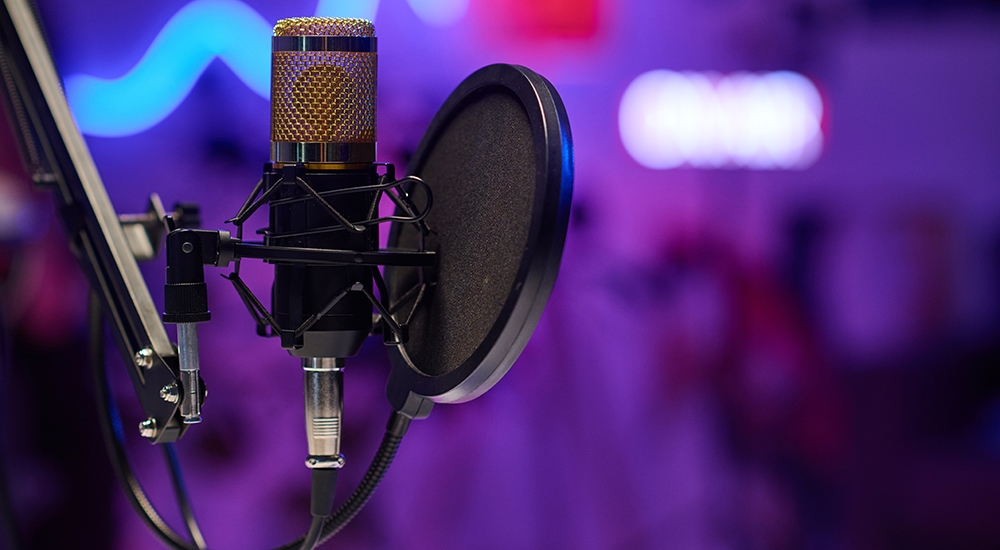
As a voice-over artist, it’s important to have a microphone that captures your voice with clarity and gives you the ability to record high-quality audio.
In this guide, I’m listing the best microphones for voice-over, along with my top choice, so you can pick the best one for you.
What is the best microphone for voice-over?
While there are a few different types of microphones that can work for voice-over, my favorite is a condenser microphone.
Condenser microphones are known for their clear, detailed sound. They’re also very sensitive, so they can pick up even the slightest sound. And there's one condenser microphone that is a great choice for voice-over.
In my opinion, the all-time best microphone for voice-over is the Neumann TLM 103. Even though it's a more expensive mic, it's worth it in order to get that warm, clean sound which is perfect for recording voice-over.
Choosing the best microphone for you
Here is my list of the best microphones for voice-over.
These mics all have XLR connections, so you'll need some kind of audio interface to connect them to your computer and record in your DAW (audio recording/editing program).
One may be better for you than another based on your specific needs, but you can't go wrong by choosing any of these for voice-over work.
BEST OVERALL MICROPHONE
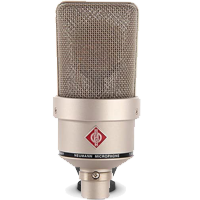
The Neumann TLM 103 is a large diaphragm condenser capsule cardioid microphone known for low-noise and a warm sound.
I use the Neumann TLM 103 ever day in my own voice-over studio. I love it's warm, clean tones. If you go with the TLM 103, it has a great chance of being your mic for life.
BEST NOISE REDUCING MICROPHONE
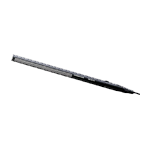
Made for recording audio in film, radio, and television the Sennheiser MKH 416 is a short shotgun microphone with excellent directional control.
As a unidirectional, the MKH 416 is great at narrowing in on your voice and preventing outside noise from getting picked up.
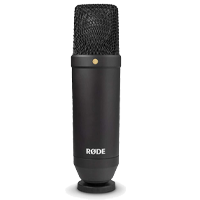
The Rode NT1 is a large diaphragm capsule with a cardioid pattern. With an ultra-low self-noise and affordable price, it's one of the better options available when starting in voice over on a budget.
BEST BUDGET MICROPHONE
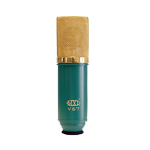
Don't let it's low price fool you, the MXL V67G is comparable in sound quality to some of the most sought-after and well-known voiceover microphones in the world. It's a top choice when wanting the best budget microphone for voice over.
Finding the right mic for your voice
There are a lot of great microphones out there that are perfect for voice-over work. This guide listed some of the best options, along with my top pick.
So, whether you’re just starting out or you’re a pro, you can find the perfect microphone for your needs that will give you clean voiceover recordings. But it's important to keep in mind, all voices are different.
So it's hard to say which mic would sound best for YOUR voice.
For more information on picking the right voice-over mic, check out the podcast episode below to learn:
- Why there is no single "best microphone for voice-over
- The most popular mics used by voice actors
- And what's even more important than the microphone you pick.
Listen to the podcast below:
Links & Resources from this episode
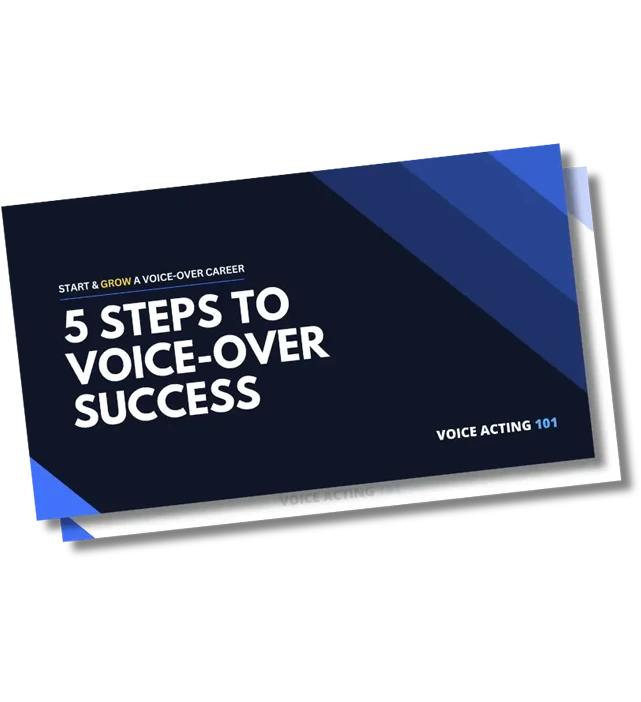
What are you’re thoughts on the shure sm7b?
I’ve never used it myself. Shure is a great name. I’m not a huge fan of dynamic mics, but the sm7b is very popular.
For the time being I’m using the Zoom H1 on a monopod. Requires no xlr or pre amp. I’m recording a pod cast with three people and it works o.k. Is a DMAN sight better than a smart phone mic! Looking forward to upgrading though.
Damn, so that cheaper mic you mentioned is actually good enough to even compare it to the TLM103?? That’s insane. I’m tempted to buy it, even though I already have a more expensive mic already, the Senheiser MK4.
Why is there no volume control on your videos?
You should see a volume control under the play button now.
Hi , Jason ! I have an overall voiceover question : The voiceover industry had changed ; The way voiceovers used to be done was this : Talent would have an audition at a studio ; then the selected candidate would be contacted , imformed of the address of the studio where they would be recording , have their sessions ( which could last up to two hours) , sign their invoices and be paid 2 weeks later. Does that not occur anymore ? According to your very informative podcast , actors have to purchase rheir own recording equipment , find a really well- treated room , and make the recording of their client’s copy ( script) themselves- and then send it to the client. ( If I have any of this incorrect , please let me know . Thank You Kindly, Tina
Hi Tina,
Great question! Some VO niches still work the old school way of going into a studio, but the majority of voice-over work is now done from your own studio and then sent to the client.
In my 20+ years in VO, I’ve never once recorded voice-over in an outside studio. I’ve had clients in New York request me in their studio, but with technology like Source-Connect or IPDTL, they’ve agreed to record remotely. This saves me travel time and missing out on other projects.
I’ll cover it in more detail in an upcoming podcast.
Would you please test or at least comment on, the following mics for voiceover: Rode NT1 (‘new’ version) and Samson SAC03. Thanks.
I’ll look into getting these for testing.
Hi Jason, I use the $150 AT2020 USB+….its one of the only mics one of my teacher recommends (his name is David H. Lawrence XVII). It works for me!! any thoughts on that?
I’ve heard good things about it. Feel free to send me a sample and I can give my thoughts.
Thanks for sharing. I have the Scarlett Solo package which was provided with my training by Such A Voice. Any comment on that?
I haven’t heard the mic included with the package but the Focusrite interfaces are great. I’m sure the mic is fine to start with as well.
Great podcast Jay
Thanks Kenny!
I use a Sennheiser MK4 XLR mic. Do you have an opinion on it? I also use an Audient iD14 audio interface.
I have a Yeti for gaming, but it doesnt take screaming very well, not even with the gain turned down, and it has a really annoying high pitched whine going on in the background. A lot of people complain about this noise, or static coming from the Yeti. Ive heard you can use a powered USB hub to improve the noise the Yeti makes, but I havent tried it myself yet.
The samples I’ve heard with the MK4 have sounded decent.
Hey, that’s the same mic I have, Ashley. Small world. I’m trying to save up for the TLM102, which is only $700, compared to the Neumann TLM103, which like Jason said, is a grand. haha
I’m of the school that believes you need to give producers the most neutral, uncolored sound you can. It’s difficult to undo any EQ’ing you’ve done if (when!) the producer doesn’t like it, especially when he or she is producing a two-voice piece with people in different studios and on different microphones. Two much difference and the producer is stuck.
I’ve been thru CAD, Neumann, Sennheiser, EV, Shure, AEA, & AKG over 25 years. A dynamic is best on a low budget. It won’t sound fabulous, but it won’t sound bad, either, and the workhorse EV RE20, Sennheiser 421, and Shure M7 will not let you down.
Many like Neumann TLM series but I found them to be overly metallic and lacking in body.
We all dream at some point of owning a Neumann U87, but they are now $3500.
For several years I’d looked at ads for Lawson mics in Tape Op, Recording, and other mags, then called Gene Lawson and talked to him about the model he recommends for vocals, L-47 MP II, a tube condenser. It’s a clone of the Neumann U-47 – the tube version, not the transistorized one, which is The. Dream. Microphone, but is NLA – and a used one, if you can pry it out of the hands of an owner who knows what he has, is $8-10,000.
I heard a shootout between the U-87 and the L-47, and the latter made the Neumann sound just okay, if that can be believed. I’ve had an L-47 for 10 years and wild horses could not get it away from me. Here’s why:
It sounds like me, not me-through-a-microphone. Unlike Neumanns, which either love or hate your voice, by some magic the Lawson sounds great with every voice I’ve put through it, which is over 100. It’s $1995.
It’s the only microphone I’ve heard that I would recommend without reservation, and to anyone.
An engineer friend of mine, upon hearing a file I sent him recorded with the Lawson when I first unpacked it, said, “It sounds like Disney.”
Wow – looks like you’ve tried all the mic brands. Good to know your take on the L-47. https://www.lawsonmicrophones.com/product-page/l47mp
I started with a rode nt1-a but recently got an Aston spirit, really great mic! But getting my nt1-a modded so looking forward to trying that out too…
USB mics due to the all in one nature have issues with noise floor/hiss.
I started with the Apogee MiC during my first lessons and upgraded to a TLM-102 in the last year, after I built a treated recording space. I love the Neumann and still have the Apogee as a travel mic.
Apogee MiC has an impressive sound. Hard to beat the warmth of a Neumann.
I started booking work with… Rode VideoMic Go. Quickly realised I needed to upgrade and went with the Rode Procaster Dynamic mic due to a lightly treated room for soundproofing. Still use the VideoMic for my Acting selftapes.
I’m all for starting with an affordable mic and upgrading as you need once you get work.
Started with Rode NT1, then upgraded to Sennheiser MKH416.
What did you think of the Rode NT1 while you used it?